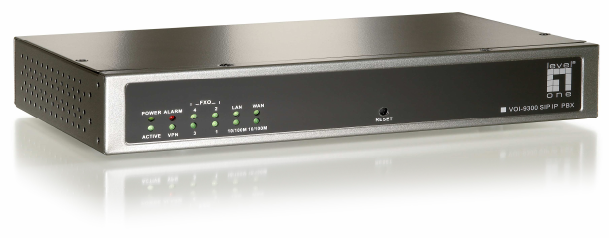
2007-11-21 4
4
1. Introduction
1.1. Overview
The VOI-9300 is an embedded Voice over IP (VoIP) PBX Server with Session Initiation Protocol (SIP)
to provide IP extension phone connections for global virtual office of small-to-medium business (SMB)
companys. Equipped with 4 x FXO ports, Ethernet LAN and WAN ports plus Life Line features,
VOI-9300 integrates the telephony network and the data network into a manageable converged
network to provide an efficient and economical PBX for global long distance voice communications.
VOI-9300 IP PBX works with various IP phones (Desktop, WiFi, Bluetooth, and DECT), VoIP
gateways, and analog telephone adapters (ATA) to route calls among client phones, analog phones,
and PSTN network. Call features such as conferencing, auto attendant, and voicemail can be
seamlessly enabled for all phone devices. In addition, it also provides Internet access to all LAN
devices through VPN NAT router.
VOI-9300 IP PBX provides call control and media relay services to SIP clients, and it performs many
primary functions, such as SIP Registrar, SIP Outbound Proxy with media relay, SIP Gateways (FXO),
SIP PBX for extension calls, Auto Attendant Interactive Voice Response (IVR), and Find-Me
Conferencing.
VOI-9300 IP PBX has a built-in suite of PBX applications for supplemental services. This lowers down
the total cost of a converged network enabled by VOI-9300 IP PBX than building separated
infrastructures for legacy telephony network and data network. In addition, with a web-browsable
interface to the data network configuration and voice service provisioning, VOI-9300 brings the
manageability of both networks together to facilitate administration locally and/or remotely.
Note that VOI-9300 requires an IP address, a subnet mask, and its gateway Router IP address for its
own use to connect to Internet. These three are available from your Internet service provider.
VOI-9300 may enable PPPoE or DHCP features to automatically get an assigned dynamic IP from the
ITSP. Please refer to Web Configurations for detailed information.


















